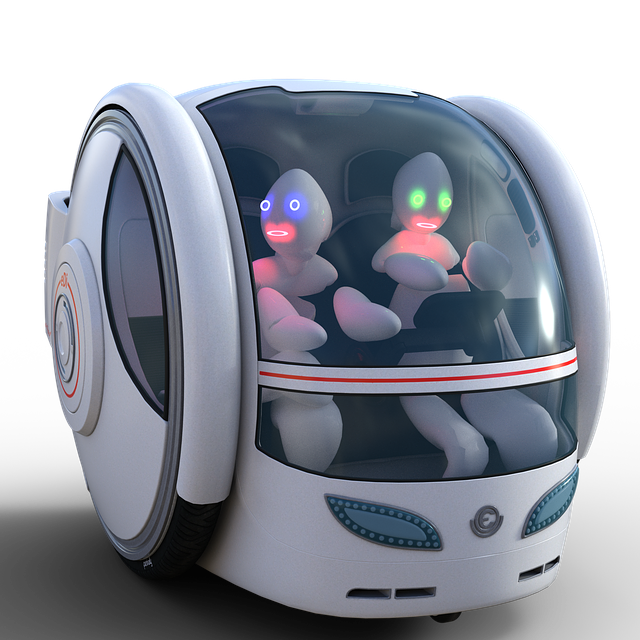The Evolution and Future Prospects of Autonomous Vehicles

Autonomous vehicles, once a futuristic concept, are rapidly becoming a reality. The convergence of advanced technologies such as artificial intelligence (AI), sensors, connectivity, and robotics has propelled the development of self-driving cars, trucks, drones, and other autonomous vehicles. This article explores the evolution, current state, challenges, and future prospects of autonomous vehicles, examining their potential impact on transportation, society, and the economy.
Evolution of Autonomous Vehicles:
The concept of autonomous vehicles traces back to the early 20th century, with visionary ideas depicted in science fiction literature and films. However, it wasn’t until recent decades that significant advancements in computing power, sensor technology, and AI algorithms laid the groundwork for practical implementation.
Early Research and Development:
In the 1980s and 1990s, researchers and engineers began experimenting with autonomous vehicle prototypes in controlled environments such as university campuses and research labs. These early vehicles relied on basic sensors and rudimentary algorithms to navigate predefined routes with limited autonomy.
Rise of Driver Assistance Systems:
The adoption of driver assistance systems, such as adaptive cruise control, lane-keeping assist, and automatic parking, marked a significant milestone in the evolution of autonomous vehicles. These systems introduced semi-autonomous capabilities that enhanced safety and convenience for drivers while laying the groundwork for more advanced autonomous technologies.
Emergence of Self-Driving Technology:
In the 21st century, breakthroughs in AI, machine learning, and sensor technology accelerated the development of fully autonomous vehicles. Companies like Google (Waymo), Tesla, Uber, and traditional automakers invested heavily in research and development to bring self-driving cars to market. These vehicles utilize a combination of cameras, LiDAR, radar, GPS, and powerful onboard computers to perceive the environment, make decisions, and navigate complex road conditions autonomously.
Current State of Autonomous Vehicles:
As of the present, autonomous vehicles have made significant strides but are still in the early stages of deployment and commercialization. Several factors influence the current state of autonomous vehicles:
Testing and Pilots:
Companies and research institutions conduct extensive testing and pilot programs to evaluate the safety, reliability, and performance of autonomous vehicles in real-world conditions. These tests involve various scenarios, including urban environments, highways, adverse weather conditions, and interactions with pedestrians and other vehicles.
Regulatory Framework:
The development and deployment of autonomous vehicles are subject to regulatory oversight and approval by government agencies. Regulatory frameworks vary by country and region, with authorities issuing guidelines, standards, and permits to ensure the safety and compliance of autonomous vehicles on public roads. Achieving regulatory approval is a critical step for autonomous vehicle manufacturers and operators to commercialize their products and services.
Industry Collaboration:
The autonomous vehicle ecosystem involves collaboration among technology companies, automakers, suppliers, policymakers, and academia. Partnerships and alliances facilitate knowledge sharing, research collaboration, and standards development to accelerate innovation and address common challenges such as safety, cybersecurity, and infrastructure requirements.
Challenges and Considerations:
Despite the progress made in autonomous vehicle technology, several challenges and considerations must be addressed to realize their full potential:
Safety and Reliability: Ensuring the safety and reliability of autonomous vehicles is paramount to gaining public trust and regulatory approval. Challenges include developing robust perception and decision-making algorithms, addressing edge cases and unpredictable scenarios, and validating performance across diverse environments and driving conditions.
Legal and Liability Issues:
The legal and liability framework surrounding autonomous vehicles is complex and evolving. Questions arise regarding responsibility in the event of accidents, insurance coverage, liability allocation between vehicle manufacturers, software developers, and human operators, and compliance with traffic laws and regulations. Clear legal guidelines and liability frameworks are needed to address these issues and mitigate risks.
Ethical Considerations:
Autonomous vehicles raise ethical dilemmas related to decision-making in critical situations, such as avoiding collisions, prioritizing the safety of occupants versus pedestrians, and navigating moral and ethical dilemmas. Resolving these ethical considerations requires interdisciplinary collaboration involving ethicists, policymakers, technologists, and society at large.
Infrastructure Readiness:
The widespread adoption of autonomous vehicles requires infrastructure upgrades and investments to support connected and automated mobility. This includes the deployment of dedicated lanes, intelligent transportation systems, 5G networks, vehicle-to-everything (V2X) communication, and charging infrastructure for electric autonomous vehicles. Coordinated efforts between public and private stakeholders are essential to address infrastructure readiness challenges.
Future Prospects of Autonomous Vehicles:
Looking ahead, the future of autonomous vehicles holds immense promise and potential impact across various sectors:
Safety and Mobility:
Autonomous vehicles have the potential to significantly reduce traffic accidents and fatalities by eliminating human error, which is a leading cause of road accidents. Advanced sensor technology, AI-driven decision-making, and vehicle-to-vehicle (V2V) communication systems enhance situational awareness and enable proactive collision avoidance strategies, making roads safer for occupants and pedestrians alike.
Urban Transportation and Mobility Services:
Autonomous vehicles are poised to revolutionize urban transportation and mobility services, offering on-demand ride-hailing, shared mobility, and last-mile delivery solutions. Self-driving taxis, shuttles, and buses could transform the way people commute, reducing congestion, pollution, and parking demand in urban areas. Mobility-as-a-Service (MaaS) platforms will integrate various modes of transportation, including autonomous vehicles, public transit, micromobility, and walking, to provide seamless and sustainable mobility options for urban residents.
Economic Opportunities:
The widespread adoption of autonomous vehicles will create new economic opportunities and business models across industries. Autonomous vehicle technology will disrupt traditional transportation sectors, including logistics, freight transportation, public transit, and automotive manufacturing. Companies that embrace autonomous technology stand to gain a competitive advantage by offering innovative products and services, reducing operational costs, and tapping into new revenue streams.
Environmental Sustainability:
Autonomous vehicles hold the potential to enhance environmental sustainability by promoting electric and shared mobility, optimizing traffic flow, and reducing greenhouse gas emissions. Electric autonomous vehicles powered by renewable energy sources contribute to decarbonizing the transportation sector and mitigating the impacts of climate change. Furthermore, autonomous vehicle fleets can optimize routes and vehicle utilization, minimizing energy consumption and environmental footprint.
The future of autonomous vehicles is filled with promise and potential for transformative impact on transportation, society, and the economy. While significant progress has been made in the development and testing of self-driving technology, challenges remain in areas such as safety, regulation, ethics, and infrastructure readiness. Addressing these challenges requires collaboration among stakeholders from government, industry, academia, and civil society to realize the full benefits of autonomous vehicles while ensuring safety, equity, and sustainability. As autonomous vehicles continue to evolve and mature, they hold the promise of safer roads, improved mobility, and a more sustainable transportation future for all.

